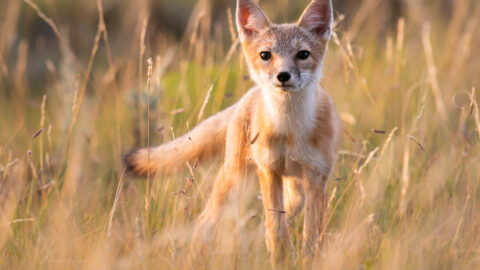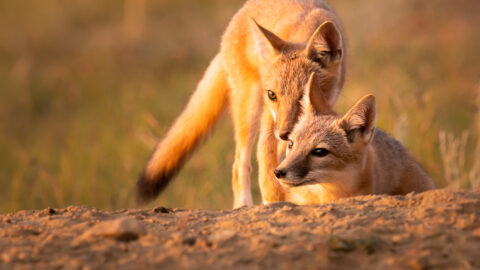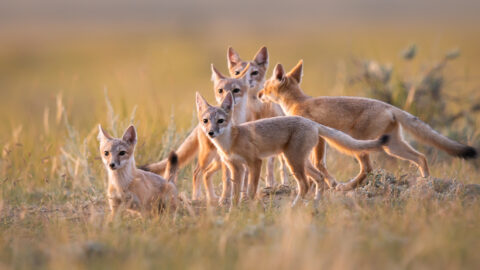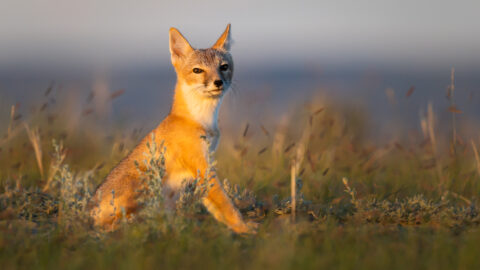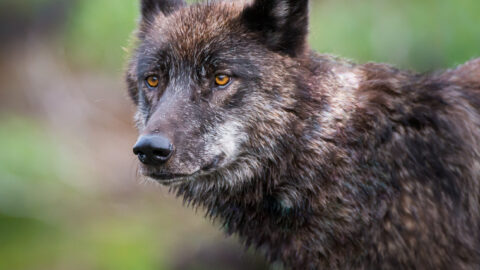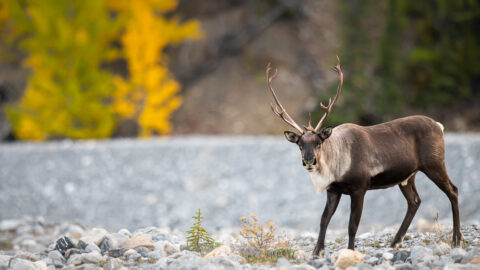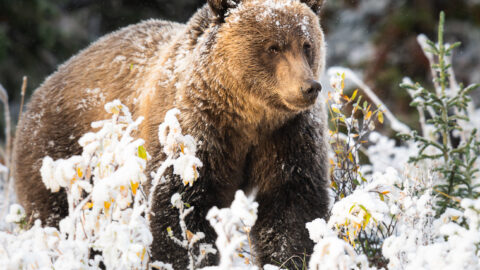Estimated Read Time: 25 minutes
Can we save every species?
Decision time.
What should we do? How would you balance people and nature – how would you safeguard biodiversity while bridging the urban-rural divide, growing our economy, meaningfully achieving reconciliation and overcoming divisive cultural wars?
Look, picking sides is easy. Knowing who’s right and who’s wrong is easy. But making the call? Living with the consequences? That’s hard.
We might not live in the society we want to live in. We might not have the leaders we want – in politics, in business, in advocacy, in media. We might not like the facts we’re told – or how the facts are presented. And yet today? This is what we have.
We can change it, but change takes time. And the question isn’t what we’ll do tomorrow, but what can we do today?
After all, the issues are too urgent and too real to wait until tomorrow. We need to make a decision today – for people and for nature.
 In 2018, Quebec did make a decision. It chose to write-off the only caribou found in the Abitibi-Témiscamingue region – home to the communities of Val D’Or and Ryoun-Nourada.
In 2018, Quebec did make a decision. It chose to write-off the only caribou found in the Abitibi-Témiscamingue region – home to the communities of Val D’Or and Ryoun-Nourada.
Why? Cost, of course.
To save the remaining 18 caribou, the government would have had to spend $76 million across 50 years to protect their habitat.
Of course, that number doesn’t come close to the $200 million a previous Quebec government paid to build a hockey stadium in a failed effort to attract an NHL team to Quebec City, but it was still a high price tag to save the caribou. And that was before COVID.
Ultimately, for Quebec – and for us all – it’s a question of resources and how we choose to spend them. And even if you disagree with the Quebec government’s decision, remember this, says Sam Sullivan:
“It’s humans that vote and humans that are running this government.”
In other words, Sam, the former mayor of Vancouver, is saying if you don’t like the choices being made, look in the mirror or work to change the hearts and minds of your neighbours.
“In order to get this political system to support an initiative, you need to get people to support it because that is the way we make decisions and our decisions powerfully impact the environment and all people.”
And that’s why this is important to understand: Building a hockey rink might provide joy; saving caribou might create pain.
As the then-Quebec minister noted in a statement about the decision, saving the caribou would also cost 187 direct or indirect jobs – a price the government was simply not willing to pay.
That’s one decision and one rationale for it. In other scenarios, we’ve made different choices – in part because the choices were easier.
Brian Keating, the former Head of Conservation Outreach at the Calgary Zoo, explains.
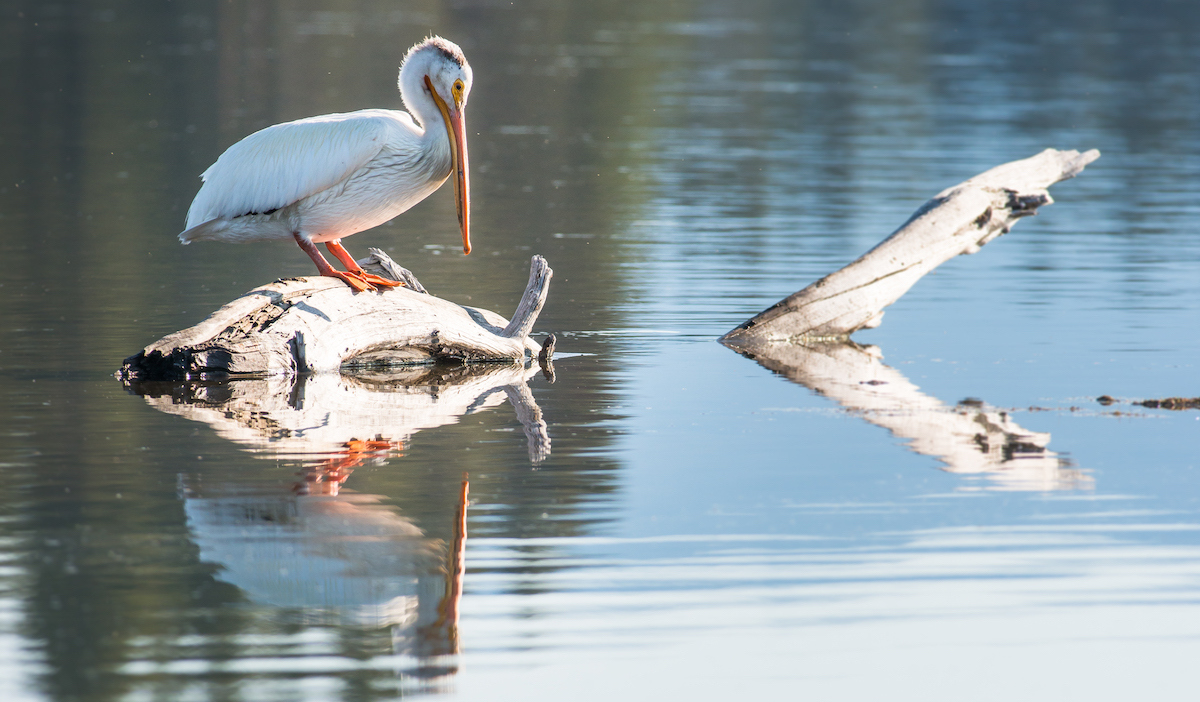 “Pelicans are an example of the success that we’ve had in Alberta. They were on the endangered species list for years. In the early 1900s, they were deemed being competition to fishermen. And now their populations – because we’ve educated people, we’ve got people interested because areas are protected where they nest – they’re coming back.”
“Pelicans are an example of the success that we’ve had in Alberta. They were on the endangered species list for years. In the early 1900s, they were deemed being competition to fishermen. And now their populations – because we’ve educated people, we’ve got people interested because areas are protected where they nest – they’re coming back.”
And there are other, equally impressive success stories.
The swift fox was extinct in Canada by the 1930s. But through one of the greatest environmental comebacks anywhere in the world, they were returned to the prairie landscape. Today? 650 can be found seeding plants and managing important populations of rodents, like prairie dogs, in what is the most threatened ecosystem type in the world.
Or, in other words, the swift fox – like the bison – is no longer a symbol of what’s lost, but a reminder of what we can still do.
 Like bringing back North America’s tallest bird, the whooping crane, from a mere 15 individuals on the planet to a population of over 600.
Like bringing back North America’s tallest bird, the whooping crane, from a mere 15 individuals on the planet to a population of over 600.
Communities and countries worked together to protect nesting sites. We physically re-taught them how to migrate until their impulses returned. And now, maybe just maybe, you’ll find a pair in the Robson Valley, en route to a better future.
Other efforts, like reintroducing the black-footed ferret to Grasslands National Park, failed.
Brian Keating was involved in all of these initiatives and he says his take-home message is this:
“You have those dark moments. You wouldn’t be human if you just didn’t have disappointing moments that affected you deeply. But what I’ve tried to do throughout my career is turn the page and try to get back on track. Because I believe that working positively, and working with positive people, you can yield positive results.”
In other words, we will have setbacks, but we can do it.
Brian says look at “places like Zimbabwe, that have gone way down the tube. Now they’re climbing back up again and I see wildlife populations rebounding. Even though they may have diminished during the bad years, they’ve come back and it does put back a little piece of what it used to be.”
Brian adds “when you have a success, I have found that success breeds success. Obviously, we’re going to have to work very hard to make it all happen, but I believe we can (protect our biodiversity).”
But when we choose to act? It isn’t always for the right reasons.
“It’s kind of, again, politics that takes place,” as biologist Dr. Victoria Lukasik points out.
As an example, if we really want to curb predation of caribou to give them a better chance at survival, we need to stop killing wolves and kill the popular predator that might be a bigger threat to this endangered species.
As Victoria explains, “there’s not a lot of evidence that wolves are even eating the caribou, and then there is some evidence that grizzly bears are eating caribou. But to kill a bear is really not popular, so they aren’t going to go there.”
And she’s not wrong. Grizzlies are becoming untouchable, especially when it comes to caribou, even if they’re becoming untouchable because some of the grizzly bear populations in question are also threatened, as bear biologist Dr. Stephen Herrero reminds us.
“Grizzly bears on the fringe, where they have more exposure to people doing different things. That’s where they have the highest mortality rate and where they’re in the greatest danger of being lost.”
Still, the caribou are closer to the edge than grizzlies and it begs the question: Can society be trusted to make the right decision, even if it’s the hard decision?
Or how about this: Will we prioritize saving an important microorganism if we learn it’s more threatened than the caribou and the grizzly?
Yemisi Dare is a scientist with the federal government and she tells us the answer is likely no, because we tend to value charismatic megafauna like grizzlies and caribou, even if it’s understandable.
“The challenge of valuing small sized creatures lies in the greater difficulty in observing their existence – and therefore seeing their connection to anything else. If you don’t know it’s there, how can you value it?”
But value it we should, Yemisi explains.
“Smaller creatures, because of their tiny size, can fill many more kinds of ecological spaces and perform many more functions in ecosystems than larger animals. And they are very well adapted to these varied niches.”
But most of us don’t know and don’t care about the fate of the tiny shrimp-like creature known as the Corophium that lives in the mudflats of the Bay of Fundy.
Yemisi says these mudshrimp “serve as a high nutrient source of food for a range of shore bird species, like Sandpipers and Plovers, as well as a wide range of fish. In particular, birds that are on a migratory path up north to the arctic use these mudflats for fueling stopovers where they feast on the Corophium before heading to their wintering grounds. Now imagine if something happened to the mudflats and this species was wiped out. What would happen to all the different bird and fish species that depend on them?”

It’s why, Yemisi argues, to protect biodiversity – to allocate our resources properly in the fight to save species on the brink – we need to be nature literate. We need to know the roles and values and connections of the creatures we know and of those we don’t.
“Tiny creatures that you need to look closely at or you might miss them are hard at work, remodelling the landscape by breaking down plant and animal material, recycling nutrients into the soil, burrowing and creating new habitat for other species, pollinating flowering plants, and providing a vital and abundant food source for a wide range of other, larger species.”
When we’re not nature literate, we’re prone to making bad decisions. And remember: We’re all decision makers – not only as voters, but also as consumers.
Think about this:
Canada’s largest conservation organization, the World Wildlife Fund, acknowledged to Maclean’s Magazine that the animals they focus on advocating for isn’t always driven by science, but often fundraising appeal.
WWF’s Emily Giles told Maclean’s the animals they focus on “are selected because of their ecological importance, significance to Canadians, representation of an issue or even social appeal.”
That might sound cold, but really what it is? Desperation. It’s grasping at straws in the hope of getting Canadians to actually care.
And it’s within this reality that some are calling for a different approach to species at risk: One that shifts the decision-making process from a popularity contest to a cost benefit analysis.
In New Zealand and in some parts of Australia, it’s what’s known as Priority Threat Management. But we can call it what it is: Effective cheapness.
The idea goes something like this:
More than half of our species are on decline and that decline will only speed up with climate change. We can focus on the animals facing the most dire situations – which is mostly what we do now – or we can focus on the animals simply of ‘Special Concern’ – those threatened, but not facing long odds of survival.
With species seriously on the brink, we might be able to bring them back, like we did with the whooping crane. Or we might fail, as we did with the black-footed ferret and appear to be doing with several caribou subspecies.
But if this were Vegas, the betting line would be that this strategy yields more ferret-caribou loses and way fewer whooping crane wins. And in the process, we’re burning up precious resources.
Meanwhile, the species only marginally threatened will likely become more endangered if we don’t take action immediately. By focusing on the most at-risk creatures right now, we might lose more than we win today and just set ourselves up for more long odds with more species tomorrow.
So, the theory goes, if we’re betting the lives of species – the very fabric of biodiversity – why not bet on a winning hand?
In medicine and in war – and in Silicon Valley, of course – it’s known as triage. But when it comes to the impossible questions facing biodiversity?
Naturalist Brian Keating says “it’s essentially playing God, isn’t it? We used to talk about that at the zoo when we were deciding which species we were going to focus in on and you are writing off some.”
It is playing God. And it’s a strategy that does write-off some life. Is that the right thing to do? Is it the moral thing to do?
In many ways, it’s just a new take on what’s known as the Trolley Problem – a philosophical ethics question that asks: Do you divert a trolley to kill one person and save five others who would otherwise be killed?
When it comes to balancing people and nature, the stakes are a bit different, but the essence of the question is the same. But with both versions of the Trolley Problem, at issue is what – or who – is being sacrificed.
Dr. Kerry Bowman is a medical ethicist with the University of Toronto and consults with governments, organizations and citizens the world-over who are grappling with debates just like this one.
Kerry tells us “environmental ethics, conservation ethics, is really beginning to emerge as the world and its challenges get more complicated. What kind of life is worth saving and what kind of life isn’t worth saving?”
And when it comes to debates like this one? Kerry says “we want ethical questions to evolve and mature along with environmental questions. But what I worry about is if ethics doesn’t evolve, and the ethical questions don’t mature with the science, that desperate measures may be enacted.”
Sandra Odendahl is an environmental scientist, engineer and a financial executive. More than most, Sandra understands the complex web of life and finite resources. She says, “I think the challenge, for example, do you save the mountain caribou because it’s going to cost a gazillion dollars and chances are pretty low, or do you save 6 other species, using that same gazillion dollars, but the chances are higher?”
Sandra argues “that’s not just a scientific question. I worry that the other people who should be weighing in and thinking about that and debating those decisions… I don’t know if everyone is equipped to have those conversations because they are disassociated from nature.”
Biologist Laura Kennedy understands the point. As she points out, right now, we default – consciously or subconsciously – to conserving the species that matter to us. And that’s usually an economic equation, Laura says.
“A lot of people argue that, while humans are a part of these ecosystems, wildlife needs to be managed for wildlife itself in order to conserve overall biodiversity, not just the species that matter to humans.”
In other words, without caring for each species equally, species triage won’t work. But Laura is also a realist.
“The problem is, when these resources drop, there’s often not a plan in place to regain (declining, less popular species) populations.”
The answer might be to attach an economic value to every species. But biologist Dr. Victoria Lukasik, like many scientists and policy advocates, hates the idea of putting a price on species recovery. If we did that, Victoria believes, endangered species triage just becomes an economic equation – a license to let go of inconvenient, expensive species like the caribou.
“It’s a really slippery slope because where do you draw the line? What if maybe this month, a government says: ‘We won’t let herds X, Y and Z go.’ Then, two years later, another person in government says: ‘we won’t let X and Y go, but Z is not doing any better, so we’re not going to succeed with that one.’ And before you know it, they’re all gone anyway.”
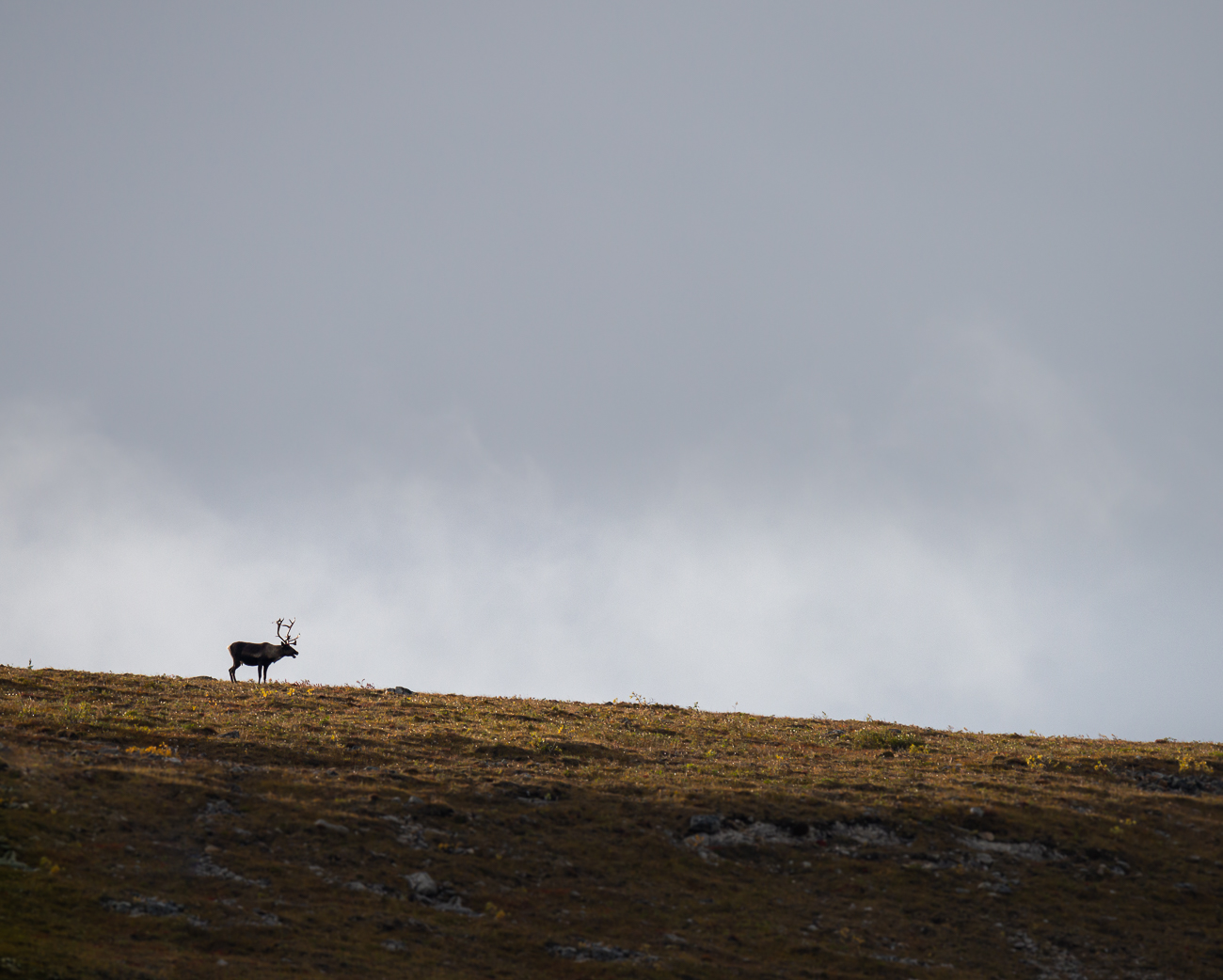
But, on the flip side, Victoria reiterates what you’ve heard before:
“The cynical side of me thinks: We can’t save them all and so why bother trying? Why don’t we be realistic and focus on which ones we can save – or which ones we’re willing to save – and just make sure we do that.”
In this scenario, what we’re willing to save? It’ll likely be the same as the list of species that are cheapest to save. And to that, biologist Dr. Shelley Alexander says “I understand in a practical sense, but do I agree with that? No, I don’t think that finances should be driving (our decisions of what to save).”
This back-and-forth is why ethicist Kerry Bowman says, “I think the conversations need to be encouraged.”
But Kerry also warns we can’t talk forever; we need to make a decision – and soon.
“There could be a cascade effect with biodiversity. We have a very high level of loss and it’s escalating very quickly. We don’t even know what could be triggered.”
Which is why, to make the right decision, Kerry says you need to remember this about biodiversity:
“I see it is as a massive brick wall. People are slowly removing a brick here, and a single brick there, and they’re saying: ‘There is no effect whatsoever, this wall is as stable as it was before I pulled these bricks out.’ How many bricks can you slide out before you get the cascade effect?”
Ken Wu gets the metaphor – understands the challenge.
“If we’re going to win the biodiversity battle to try to conserve as much as possible, it’s too slow and inefficient of an approach, given politics as well, to go species-by-species. The battle for the listing of every single species – and then to develop recovery plans for every single species and to have them implemented – we’re going to lose this battle.”
Ken Wu is the founder of Endangered Ecosystem Alliance. And his solution?
“I believe we need an Endangered Ecosystems Act. It will scale up the total rate of conservation, if it comes to the floor.”
An Endangered Ecosystems Act? Ken says it’s “legislation where scientists determine what are the minimum thresholds needed to protect ecosystems so that they maintain their ecological integrity long-term and that type of legislation doesn’t exist anywhere yet.”
By focusing on ecosystems, Ken believes all boats – or in this case, species – will rise with the tide. And, Ken argues again, it’s a more efficient use of precious resources.
“The amount of effort and time and politics involved to go species-by-species is not necessarily proportionate to the scale of those species, versus what it would take to scale up on those ecosystems.”
It’s efficiency meets science, minus ruthless pragmatism. But there is a cost.
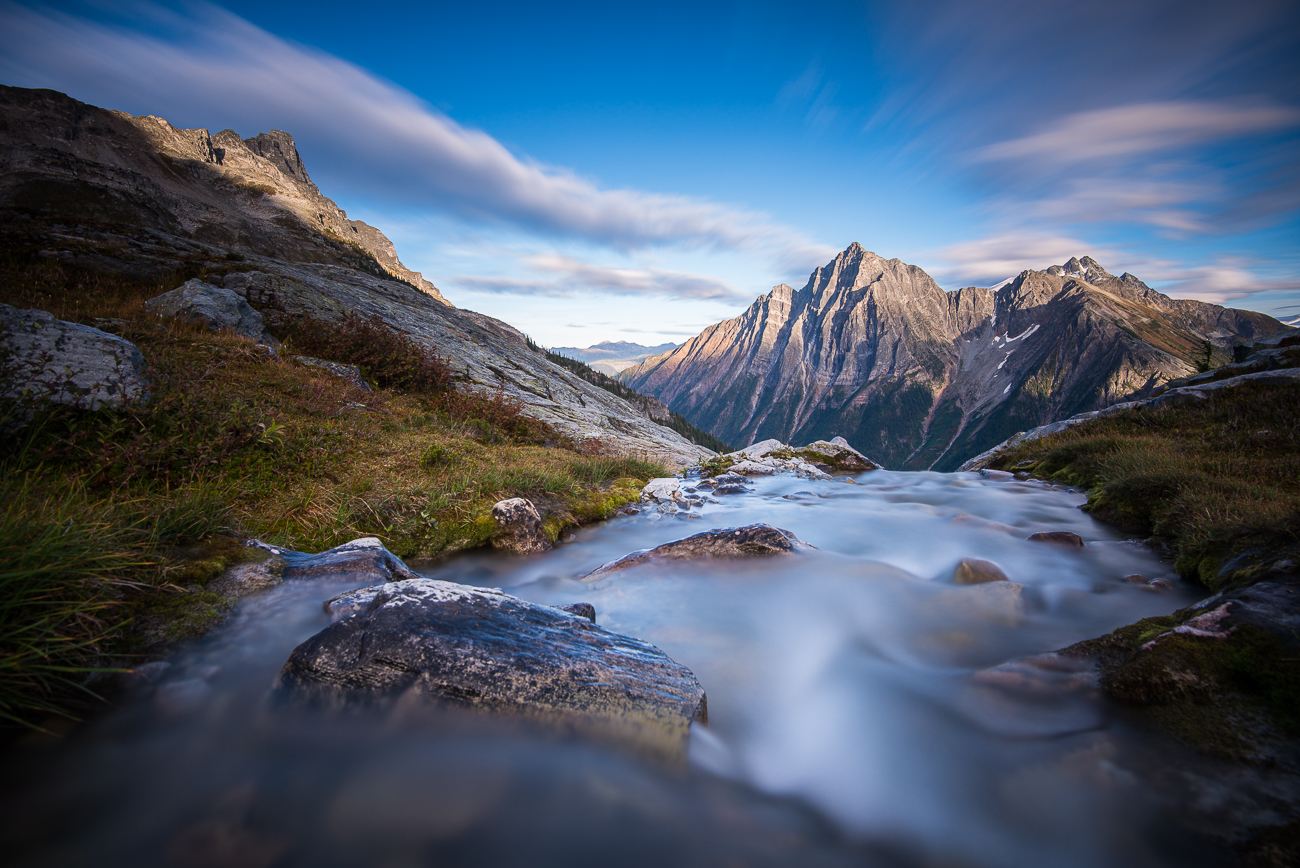 Ken explains that “to ensure that large carnivores persist over time, you’re going to need a lot more land. To ensure viable populations of the whole salmon predator ecosystems, you’re going to have to have whole watersheds protected, and a lot of them. In order to ensure that all the endemic species that are being found in the canopies of old-growth forests – insects, spiders and mites that are highly localized (and) evolved in those canopies over the last ten thousand years with lichens and smaller organisms like fungi – if you were to factor in things that matter, then it expands how much has to be protected.”
Ken explains that “to ensure that large carnivores persist over time, you’re going to need a lot more land. To ensure viable populations of the whole salmon predator ecosystems, you’re going to have to have whole watersheds protected, and a lot of them. In order to ensure that all the endemic species that are being found in the canopies of old-growth forests – insects, spiders and mites that are highly localized (and) evolved in those canopies over the last ten thousand years with lichens and smaller organisms like fungi – if you were to factor in things that matter, then it expands how much has to be protected.”
And that’s the rub.
Shianne McKay with the Centre for Indigenous Environmental Resources tells us the problem with major, national objectives – like an Endangered Species Act that mandates protection of land – is that it won’t always jive with the needs of local communities. And Shianne believes conservation must begin with communities, adding “we hope that it’s the best decision possible given their circumstances. You can’t really address the environmental issues in the face of poverty. You have to address both.”
Ken hears the point, telling us, “Everyone needs an economy and it’s important for First Nations, who’ve been deprived of the opportunity since the time of colonization. They need an alternative (to resource development) as well.”
That means for an Endangered Ecosystems Act to work, instead of endangered species triage, Ken believes we need to support communities as they transition to a newer, more sustainable economy.
“These are complex situations because many First Nations are also engaged in an active effort to log old-growth (forests) and to engage in oil and gas activities. It’s up to the provinces and the federal government and the conservationists to help foster an alternative.”
But here’s the thing: Many communities don’t want an alternative. According to pollster Shachi Kurl, “there is a subset of the Canadian population who cannot get their heads around the fact that many Indigenous people in this country are actually pro-pipeline because they see a way to reconciliation and economic opportunity, which is part of that social justice-equality-reconciliation package. ‘When my people can come up to the level that everyone else has been enjoying for a long time, we will feel that sense of equality.’ The intersections here get pretty complex pretty quickly.”
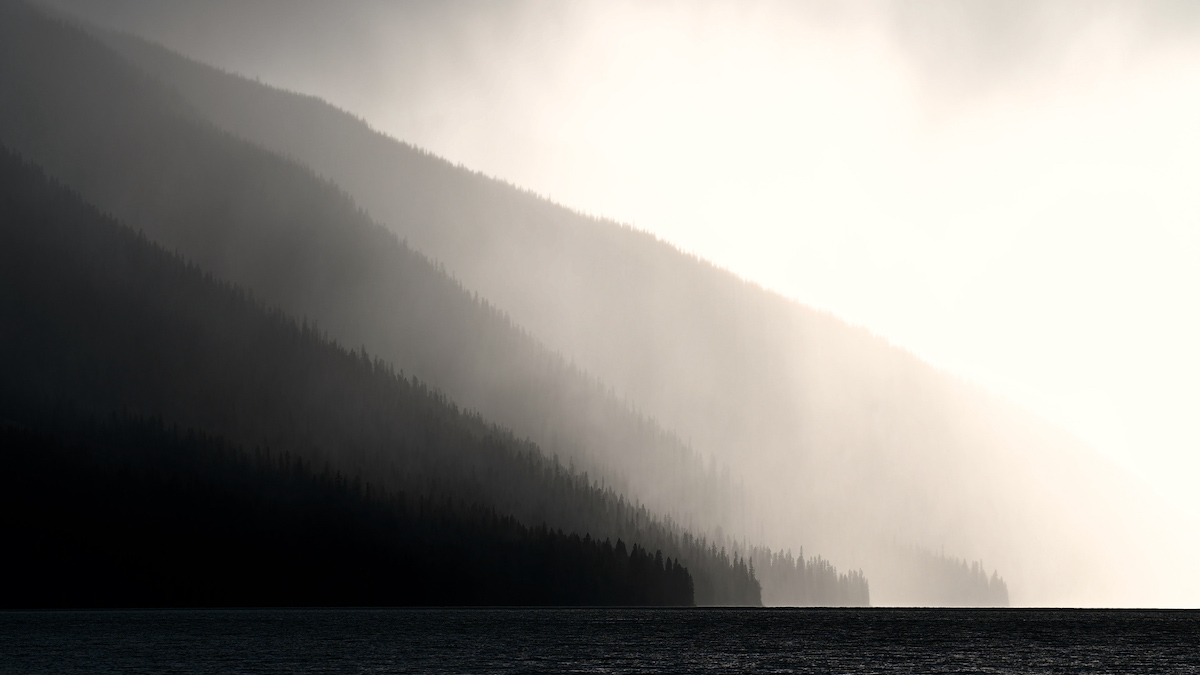
Where does this leave us? In a bind, that’s where.
Realistically, almost every decision impacts someone’s bottom line – their culture, their beliefs, their livelihood, their sense of justice, their – our – environment. And then there’s this: We can’t argue minority rights for one segment of the population, without applying those same rights to the other.
We need to consider this lesson – this reality – when it comes to making decisions on the fate of species at risk, ensuring that what we decide isn’t just a solution that works for those who share our world-view, but also accounts for those we disagree with. Otherwise, it’s not really a solution at all.
That seems overwhelming and, for that reason, it’s why, for so many of us, we shut off, rather than engage. Or, as Dr. Aleem Bharwani relays:
“Hasan Minhaj, one of the online comedians in the US, has this line where he says ‘I’m more lazy than I am woke’. And I think that’s true for many of us.”
Aleem is the director of public policy at the Cumming School of Medicine at the University of Calgary and he understands that the issues are hard – that what to do isn’t easy or obvious. But Aleem adds, “It’s true of personal relationships, it’s true of big system issues, it’s true of a lot of things: We don’t always realize what we’ve got until it until it’s gone.”
It’s why Aleem believes we all need to overcome our fear – and laziness – to help find solutions to this question and all the challenges we face. But in the doing, we must remember:
“There is no point in policy, even if it’s exactly what people want, if it’s not true, if it’s grounded in reality. Otherwise, it’s no different than a wishing well.”
Aleem says that means “the goal should be to facilitate honest, respectful dialogue.”
Which is easier said than done, until you think about this, Aleem argues:
“Sometimes you just need a turn of the kaleidoscope, where you’re looking at that same problem, that same piece of that same wall, and if some components are turned a slight way, now suddenly you can drive that line of inquiry in a very different direction.”
So, let’s do just that.
By now you understand why the intersection of people and nature is so accident prone – so messy for decision-makers. And yet that’s in part because the decision-making axis has always been trees versus jobs, environment versus the economy, as Dr. Victoria Lukasik reminds us.
“Our economic interests, which are usually the same as our political interests, are things that are often in contrast with what is best for wildlife and our environment. It’s not to say that it has to be environment versus jobs – there are other ways – but that’s the way we kind of operate as a society in Canada.”
But what if we turn the kaleidoscope? What if we looked at the issue from a different perspective?
“I do think that there’s a lot of species that can survive (without parks). Maybe it’s not the ideal, but they can survive in these modified landscapes that we’ve created.”
Victoria is a scientist who has worked with communities and decision-makers to better understand what it will take to save biodiversity. And Victoria says emerging science suggests parks are only necessary because we refuse to co-exist with large carnivores.
“The large carnivores, we think of them as sort of being in need of pristine wilderness. And I think we’re more and more seeing that, actually, what they need is just for people to tolerate them.”
Grizzly bear biologist Gordon Stenhouse has been one of the leading researchers on this very subject. Gordon tells us “our long-term data and published research papers allowed the government and industry to agree with the need for open road density thresholds for these (developed) habitats in order to ensure high levels of grizzly bear survival.”
What does that mean? Roads – and the activities that usually go along with them, like ATV use, hunting, biking, hiking – are more problematic for grizzlies than habitat loss.
“And so that does sometimes require sacrifice on our part,” explains Victoria Lukasik.
It also means we face a choice.
Victoria says, “if the people on the landscape could make the space for wildlife, then we wouldn’t need to have a ton of parks.”
Famed bear biologist Dr. Stephen Herrero agrees, adding the biggest threat to grizzlies?
“It’s really the lack of people willing to coexist. In order to coexist with grizzlies, you need to be willing to accept a certain set of behavioural standards. Garbage, simple thing. But managing garbage, and storing it in a way that won’t attract grizzlies, is essential (for their survival).”
It’s why Humane Canada’s Barbara Cartwright says coexistence matters more than parks, more important than ideas like Nature Needs Half.
“On one side, we’re impacting our environment too much. So, can we have some space for the rest of the world to live without our influence? But then if we do that, we’re going to lose our ability to live together and to maintain the health of the ecosystem with us in it.”
Northern Development’s Joel McKay agrees that we need to find a way to help nature while still allowing the opportunity for people to earn a living on the landscape.
Joel tells us, “You always want to pursue a balance between local economic needs and local environmental needs.”
But Joel reminds us that what “needs to be realized is that rural communities, especially those in the North, have few realistic options for private-sector employment that are outside of natural resource industries.”
Joel adds: “The question we need to answer is how do we right-size these industries so that they’re sustainable over the long term and operate them in a way that has little to no impact on the environment but still generates a healthy profit margin?”
Dr. Shelly Alexander is one of Canada’s leading experts on wildlife coexistence and she believes: “coexistence is possible.”
Shelley’s work with canids around the globe – and specifically with coyotes in urban and suburban Calgary – have underscored this point.
“In most environments, if people manage themselves, carnivores mind their own business and do their own thing and the conflict will not arise. That means there are options on a daily basis, if you’re living in an urban environment, to think about maintaining biodiversity, to coexist with carnivores.”
That said, even though Shelley knows we’re capable of coexistence, she doesn’t believe enough of us are actually willing to coexist with carnivores.
“There are people who are (saying) just forget this whole save half world thing. Just make it all about coexisting, humans and animals. But there’s limits to that. It’s not like we’re never going to run into conflict, without something going wrong.”
Which is why Shelley believes only concepts like Nature Needs Half – the proposal to protect half the world – will ultimately save biodiversity.
“I am still an advocate for maintaining big, protected areas where, to the best of their ability, these animals can still live out their lives.”
But what if in exchange for more parks – having a policy like Nature Needs Half – we would also need to prioritize cultural and recreation traditions within them – including hunting, ATV use, skiing and wildlife photography? Neil Fletcher of the BC Wildlife Federation says the only good solutions are the ones that take into account rural culture and values.
“These people are here to stay. They’re not going anywhere. They’re going to be living on this landscape with you and the earlier you can get to towards working with them and understanding their positions, the better you might be able to find some shared solutions.”
And that’s why Ken Wu – founder of Endangered Ecosystem Alliance – believes this is exactly the kind of trade we need to be willing to make.
“You can’t make an alliance with everybody, but it’s just that we can make alliances way beyond where we are now. Why? Environmental activists are good at rallying up other environmental activists.”
Which is fair, Ken says.
“You know, you talk to your own kind. You don’t normally try to do something uncomfortable all the time out with people who are not like you. That’s just not a natural instinct, right? But we’re gonna lose if we keep on doing this.”
Think about it: What if the choice isn’t environment or the economy, but culture or the economy? Animal rights or ecosystem rights?
How might existing alliances devolve and form? How might voting blocks shift? How might the conversation be altered?
There would still be division and disagreement, of course, but maybe not down the same fault lines.
And if every debate didn’t send our traditional, national solitudes to their traditional corners for a pitted culture war – Indigenous values versus non-Indigenous values, pro-environment versus pro economy, urban versus rural, east versus west – what might that mean?
It could be the spark needed for old adversaries to build new alliances, reshaping our debates and bridging our divides in the process.
Right now, our decision-making paradigm is predicated on having our cake and eating it too. But that seems like an old-world model; it seems naïve to think the good old-fashioned Canadian compromise can still yield enough win-wins for all of us.
By choosing between a) way more resource development than we’re currently allowing, way fewer parks and very few recreational opportunities, such as hunting, skiing, hiking, photography and ATV use; or b) way fewer regulations, allowing for way, way more hunting, skiing, hiking, photography and ATV use opportunities, but also vastly increasing the amount of protected land and significantly scaling back resource development, we’d all be forced to reassess our priorities and understand what truly matters the most, to each of us.
We’d be forced to re-look at the policy proposals and the economics and the science and the research and the stories of all affected to see what scenario best balances the needs of people and nature.
Which isn’t to say this is how we should solve our problems – that decisions are this simplistic.
They’re not.
But we do need to re-examine the problems we’re facing and how we make decisions. We can’t live in a world of zero-sum wins that cost more than dollars or species, but also the very health of our democracy.
We need to think critically and act creatively and simply do better – in our conversations, our negotiations, our decisions – for people and nature.
In the words of our former prime minister, Kim Campbell, “create, as much as possible, bridges with people who may not think alike. Try and find ways of building around dogmatism and political polarization by finding the common ground. And it’s hard.”
For the sake of our democracy, we must consider those we disagree with when we decide what we must have and what we only wish we could have. Because, after all, as Shelley Alexander reminds us: “it comes down again to values what do we want? What’s the legacy?”
Task
What do you think?
Terms & Concepts
Referenced Resources
* Quotes have been edited for brevity and clarity.
